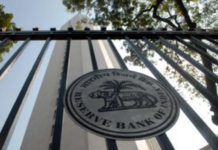By Vishav
New Delhi– The Indian Goods and Services Tax (GST) system is among the most complex in the world with not only one of the highest tax rates but also one of the largest number of tax slabs, the World Bank has said.
It added that India has the highest standard GST rate in Asia, and second highest in the world after Chile.
“The tax rates in the Indian GST system are among the highest in the world. The highest GST rate in India, while only applying to a subset of goods and services traded, is 28 per cent, which is the second highest among a sample of 115 countries which have a GST (VAT) system and for which data is available,” the World Bank said in a report.
What makes the Indian GST system even more complex is the number of different GST rates applicable on different categories of goods and services.
India currently has four non-zero rates: 5, 12, 18 and 28 per cent. Apart from that, several items are taxed at zero per cent while gold is taxed at 3 per cent. To make things worse, petroleum products, power and real estate have been kept outside the GST ambit.
According to the World Bank’s biannual India Development Update report, most countries in the world have a single rate of GST: “49 countries use a single rate, 28 use two rates and only five countries including India use four rates,” it said.
Apart from India, the countries that use four or more GST rates are Italy, Luxembourg, Pakistan and Ghana.
While the government has said it would bring down the number of rates once the new taxation system stabilises, it has repeatedly ruled out a single GST rate.
“Luxury goods, sin products, and products hazardous to the environment and health can’t be taxed at the same rate as ‘common-man products’. Wheat, rice, sugar can’t be taxed at the same rate as a Mercedes car or a yacht or tobacco,” Finance Minister Arun Jaitley had said while ruling out the possibility of a single GST rate.
When reached for comment, a World Bank spokesperson said that India is unique in terms of its size and scale of implementation when compared to other counties that have introduced GST.
“The difference with other countries in design is therefore to be expected,” he said.
But it is not just the tax rates that distinguish India’s GST system from the rest of the world. According to the World Bank report, the fiscal threshold for businesses to fall under the full GST impact is also the highest among all comparable countries.
In India, businesses having annual sales above a threshold of Rs 1.5 crore fall under the full GST, and are thus liable to remit GST and eligible to deduct input tax credit.
India started with a threshold of Rs 75 lakh, but in a span of a few months doubled it to Rs 1.5 crore mainly to ease the cost of compliance of small and medium enterprises, it said. “India’s new threshold is the highest among all the 31 comparator countries.”
The report also took note of the disruptions in the initial days of the introduction of tax reform, but added the introduction of GST should be considered as the start of a process — not the end.
“There have been reports of increased administrative tax compliance burden on firms and a locking-up of working capital due to slow tax refund processing. High compliance costs are also arising because the prevalence of multiple tax rates implies a need to classify inputs and outputs based on the applicable tax rate.
“Along with the need to apply the correct rate, firms are required to match invoices between their outputs and inputs to be eligible for full input tax credit, which increases compliance costs further,” it said.
The World Bank spokesperson said the introduction of the GST is only the start of the process that government has undertaken to implement “this bold reform”.
“Drawing actively from user-feedback, the government has been very alert to implementation challenges and continues to take steps to make GST compliance more simple and efficient,” he added.
The World Bank said while international experience suggests that the adjustment process can affect economic activity for multiple months, “the benefits of the GST are likely to outweigh its costs in the long run”.
“Despite the initial hiccups, the introduction of GST is having a far-reaching impact on reducing tax-related barriers to trade barriers, which was one of the primary goals of the introduction,” it said. (IANS)






